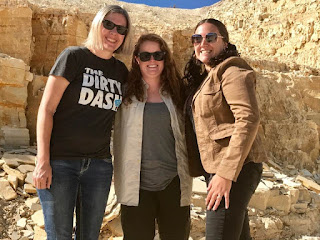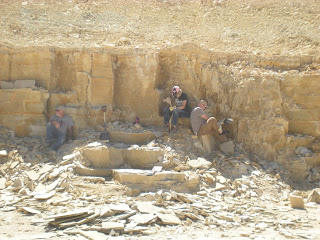Paleo Lab 2018 has begun! We have been doing many exciting things since New Year's Day. Jodie and Sara were asked to present a booth at the Natural History Museum of Utah's DinoFest! We selected some real matrix to cover over carved Parasaurolophus "Skeletons" and grid lined the boxes. This let us show guests how one should plot their scientific discoveries on a map for later use in analysis of data.
We were given a phenomenal opportunity to walk through the Natural History Museum of Utah before it opened to the public so we made a bee-line towards their barosaurus for comparison.
He's a large lad that is for sure!
Over the last few weeks of lab prep we have been trying to clean our three articulated caudal vertebrae and helping our mystery bone lose significant matrix weight. Jodie has almost cleared the matrix from vert #3 and has been trying to keep the neural spine from self destructing as she goes. Fossils may look sturdy, but they are in fact very fragile.
Yesterday's lab adventure gave Sara a dust bath. She was so covered in matrix that her dark hair had frosted tips. Rick said she looked like she was trying to imitate him!
Below you can see the mystery vertebra. Sara has been trying to isolate the matrix and remove it in larger pieces for dissection at a later time. This will free up this vertebra faster and will help us to move on to the next jacket!
The lab has also had a cranky visitor for the past few weeks. He has been under intensive surgeries and we hope he will make a steady recovery. Sadly, his reaction to medications has given him tendencies to react violently to our lab staff. Poor Rick was nearly stabbed in the neck with a screwdriver so we had to tie him up!
Thanks so much for being part of our audience as we continue our journey through paleontology prep! See you next time!








































